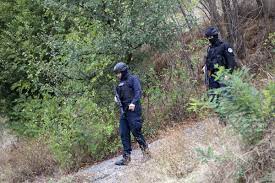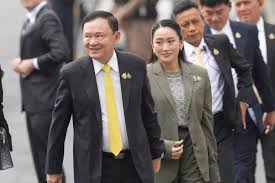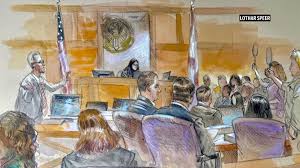
Tensions between Serbia and Kosovo flared anew over the weekend when some 30 heavily armed Serbs barricaded themselves in an Orthodox monastery in northern Kosovo, setting off a daylong gunbattle with police that left one officer and three attackers dead.
Sunday’s clash was one of the worst since Kosovo declared independence from Serbia in 2008. It came as the European Union and the U.S. are trying to mediate and finalize yearslong talks on normalizing ties between the two Balkan states.
There are fears in the West of a revival of the 1998-1999 war in Kosovo that claimed more than 10,000 lives and left over 1 million homeless.
Kosovo Prime Minister Albin Kurti accused Serbia of sending the attackers into Kosovo. Serbian President Aleksandar Vucic denied that, saying the men were Kosovo Serbs who have had enough of “Kurti’s terror.”
A look at the history between Serbia and Kosovo, and why the latest tensions are a concern for Europe.
Kosovo is a mainly ethnic Albanian territory that was part of Serbia before it declared independence. The Serbian government has refused to recognize Kosovo’s statehood, even though it has no formal control there.
Some 100 countries have recognized Kosovo’s independence, including the United States and most Western countries. Russia, China and five EU nations have sided with Serbia. The deadlock has kept tensions simmering in the Balkan region following the bloody breakup of former Yugoslavia in the 1990s.
WHAT ARE THE ROOTS OF THE CONFLICT?
The dispute over Kosovo is centuries-old. Serbs cherish the area as central both to their religion and statehood. Numerous medieval Serb Orthodox Christian monasteries are in Kosovo, and Serb nationalists view a 1389 battle against Ottoman Turks there as a symbol of their national struggle for independence.
Kosovo’s majority ethnic Albanians, most of whom are Muslim, meanwhile, view Kosovo as their country and accuse Serbia of occupying it and repressing them for decades.
Ethnic Albanian rebels launched an uprising in 1998 to rid the country of Serbian rule. Belgrade’s brutal response prompted a NATO intervention in 1999, forcing Serbia to pull out and cede control to international peacekeepers.
There are still some 4,500 peacekeepers stationed in Kosovo, a poor country of about 1.7 million people with little industry and where crime and corruption are rampant.
ARE TENSIONS RUNNING PARTICULARLY HIGH NOW?
There are constant tensions between Kosovo’s government and ethnic Serb residents who live mostly in the north of Kosovo and who keep close ties to Belgrade. Mitrovica, the main city in the north, is effectively divided into an ethnic Albanian part and a Serb-held part, and the two sides rarely mix. There are also smaller Serb-populated enclaves in southern Kosovo.
Government attempts to impose more control in the north are usually met with resistance, and the situation deteriorated earlier this year, when Serbs boycotted local elections held the north. They then tried to prevent the newly elected ethnic Albanian mayors from entering their offices.
Some 30 NATO peacekeepers and more than 50 Serb protesters were hurt in the ensuing clashes.




